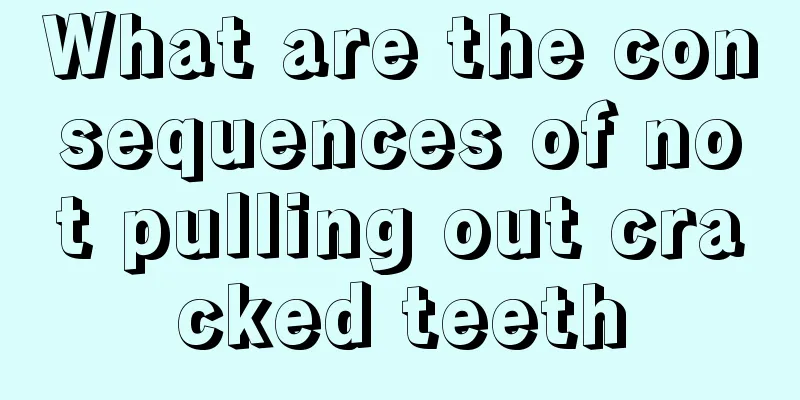What are the consequences of not pulling out cracked teeth

|
In daily life, we must take good care of our teeth. If there is a problem with our teeth, we must seek timely treatment to avoid delaying the treatment and causing more harm. Cracked teeth; many people have experienced this. Some people will have the entire tooth pulled out when this happens, while some people are afraid of the pain and dare not have the tooth pulled out. If cracked teeth are not pulled out, it will have some impact on the body. Impact 1 As some people age, the organic matter content in their teeth decreases with age, so the inorganic matter content gradually increases, making the teeth brittle. The enamel and dentin of teeth are hard and brittle tissues. Chewing some harder foods is likely to cause tiny cracks in the teeth. If the cracks are small, it is unlikely to occur in patients, and most people are unaware of it at the beginning. However, over a long period of time, as the cracks gradually deepen, they will experience a series of mild pains or discomforts, or even become increasingly severe. Impact 2 At the same time, cracked teeth are likely to occur symmetrically on both sides of the teeth one after another, or on multiple teeth in the mouth, causing a series of pain and life impacts for many people. If a series of pulp inflammation diseases occur due to a cracked tooth, it is best to treat the pulpitis first and then perform a full crown repair. When the crack has involved the subgingival, apical tissue or the root has been split, it is best to perform a complete extraction. Impact Three If there are developmental defects in the hard tissues of a person's teeth, resulting in deeper grooves or larger enamel plates between enamel columns, these are internal causes of hidden cracks. Bite trauma and excessive tooth defects are external causes of hidden cracks. A tiny, hard-to-find tooth crack that is most common in permanent molars, followed by premolars. It can cause a series of lesions in the tooth body, pulp, periapical area and periodontium. Cracked tooth is a dental disease that is difficult to diagnose. Dead teeth whose dental nerves have lost vitality, as well as some teeth with steep cusps and deep grooves, are more likely to cause brittle fractures. When the size of a tooth crack is below 17.5 microns, it cannot be detected by the naked eye, and doctors can only diagnose it through reasoning, so diagnosis and treatment are often delayed. |
<<: What are the first aid measures for tracheospasm
>>: What are the best ways to remove tattoos
Recommend
Under what circumstances does breast cancer require radiotherapy
Breast cancer patients usually need radiotherapy ...
Muscle pain behind the knee joint
The knee joint is the most complex joint in the h...
What is the disease of calf fever
Fever in the calves is a relatively common phenom...
Can I eat onions after surgery for early lung cancer?
Onions are irritating to some extent. After surge...
What are the specific measures to prevent thyroid cancer
What are the specific measures to prevent thyroid...
What can I use to wash off clothes stained by mangosteen juice
Many friends who have been to Thailand know that ...
Dietary therapy for patients with Qi and blood deficiency type brain cancer
The brain is where the human body's central n...
What health products help sleep
Dietary therapy is not as good as dietary supplem...
What are the precautions for all-femtosecond laser treatment?
LASIK is an advanced corneal refractive surgery. ...
What are the correct ways to vaccinate against swine fever
For farms, whether it is chicken and duck poultry...
Why is tooth extraction necessary for orthodontic treatment?
Orthodontic treatment requires tooth extraction b...
How to effectively increase intestinal motility?
Insufficient intestinal motility will affect our ...
How to wash off oil stains on chiffon clothes
Chiffon clothes are relatively light and soft, so...
What to do if you are drowsy in the late stage of liver cancer? Actively treat it
Liver cancer patients will have a series of sympt...
What should I do if my calves swell in the afternoon? How can I relieve it?
There are many reasons for calf swelling, which m...









